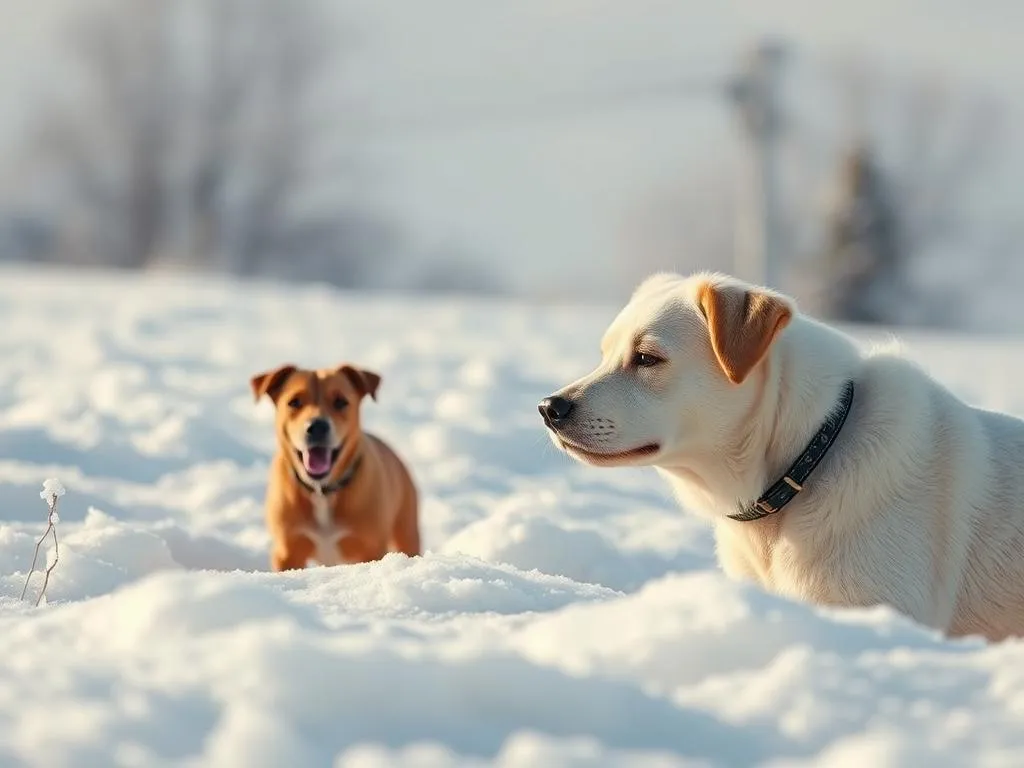
Understanding how dogs pee more in cold weather is crucial for dog owners, especially during the chilly winter months. Many pet parents notice changes in their dog’s urination habits as temperatures drop, raising questions about their furry friends’ health and comfort. In this article, we will explore the various factors that influence canine urination patterns in cold weather, backed by scientific insights and practical tips for dog owners.
Understanding Dog Behavior and Urination
The Basics of Canine Urination
Dogs urinate for several reasons, primarily to eliminate waste, mark territory, and communicate with other animals. A dog’s urination frequency can be influenced by hydration levels, health conditions, and behavioral factors. For instance, a well-hydrated dog will naturally need to urinate more often than a dehydrated one.
Understanding the reasons behind urination helps dog owners recognize what is normal for their pets. Factors such as age, size, and overall health also play a significant role in how often a dog needs to relieve itself.
Seasonal Changes in Dog Behavior
Weather can significantly impact dog behavior, including their urination habits. Cold weather may lead to changes in how dogs interact with their environment. For example, dogs might be less willing to spend long periods outside, which could lead to shorter bathroom breaks.
Additionally, the concept of territorial marking becomes more pronounced in colder months. Dogs may feel the urge to mark their territory more frequently as scents become less potent in the cold, prompting them to urinate more often during walks.
The Science Behind Temperature and Urination
Physiological Responses to Cold Weather
When temperatures drop, a dog’s body undergoes physiological changes to maintain its core temperature. This process, known as thermoregulation, can affect metabolism and hydration levels. Cold weather can lead to increased energy expenditure as dogs work to keep warm, which may affect their need to drink and subsequently urinate.
Interestingly, dogs might drink more water in colder weather than one might expect. While it’s commonly believed that dogs drink less in the winter, they often require adequate hydration to help maintain their body temperature and energy levels during these colder months.
Studies and Research Findings
Several studies have examined animal behavior in response to temperature changes. Research indicates that many animals, including dogs, exhibit altered urination patterns in colder temperatures. A study focusing on outdoor dogs found that they indeed urinate more frequently in cold weather, possibly as a response to increased territorial marking and hydration needs.
When looking at other mammals in cold climates, similar behaviors are noted. For instance, many wild canines tend to mark their territory more frequently during colder months, suggesting a natural instinct to communicate and establish presence in their environment.
Factors Influencing Increased Urination in Cold Weather
Increased Water Intake
Despite the common belief that dogs drink less water in colder weather, many dogs actually increase their water intake. This can be attributed to several factors, including the dry air associated with winter heating. Dehydration can lead to various health issues, so ensuring that your dog has access to fresh water is essential.
Changes in Routine
Winter days come with shorter daylight hours, often resulting in altered walking schedules for dog owners. Many owners may find themselves adjusting their routines to accommodate shorter walks during the day. This change can lead to more frequent bathroom breaks as dogs are outside less often and need to relieve themselves more promptly when they do go out.
Health Considerations
Certain health conditions can cause a dog to urinate more frequently, regardless of the weather. For example, conditions such as diabetes, urinary tract infections, and kidney issues often lead to increased urination. If you notice a sudden increase in your dog’s urination frequency during the cold months, it’s wise to consult with a veterinarian to rule out any underlying health concerns.
Practical Tips for Dog Owners in Cold Weather
Ensuring Proper Hydration
Keeping your dog hydrated during the winter months is vital. Here are some suggestions to promote hydration:
- Provide fresh water daily: Make sure your dog has access to clean water at all times, even if they seem less interested in drinking.
- Use heated water bowls: These can help prevent water from freezing and encourage your dog to drink more.
- Monitor water intake: Keep an eye on how much water your dog consumes, especially if they exhibit signs of increased thirst or urination.
Adjusting Walk Schedules
To accommodate your dog’s needs during colder months, consider these tips:
- Walk during warmer parts of the day: If possible, schedule walks during midday when temperatures are slightly higher.
- Shorter, more frequent walks: Instead of one long walk, consider multiple short walks to allow your dog to relieve themselves more often.
- Watch for signs of discomfort: Pay attention to your dog’s body language during walks. If they seem hesitant or uncomfortable, it might be time to head back indoors.
Winter Care for Dogs
Keeping your dog comfortable and warm during cold weather is essential. Consider these care tips:
- Dress them appropriately: Depending on the breed and size, some dogs may benefit from winter coats or booties to protect them from the cold.
- Provide a warm resting area: Ensure your dog has a cozy spot indoors where they can escape the cold and stay warm.
- Regular grooming: Maintaining your dog’s coat can help regulate their body temperature. Regular brushing can remove dead hair and prevent matting, which can trap cold air.
Common Myths About Dogs and Cold Weather
Myth: Dogs Don’t Need to Pee as Much in Cold Weather
One common misconception is that dogs require less bathroom time in the cold. In reality, many dogs may pee more in cold weather due to increased territorial marking and hydration needs. Understanding this behavior is crucial for dog owners, as it allows them to meet their pet’s needs effectively.
Myth: All Breeds React the Same to Cold
Not all dogs cope with cold weather in the same way. Various breeds have different levels of cold tolerance based on their size, coat type, and genetic background. For instance, breeds like Siberian Huskies and Alaskan Malamutes are better equipped for cold climates than short-haired breeds like Chihuahuas or Greyhounds.
When managing your dog’s exposure to cold weather, consider its breed characteristics and individual preferences. Some dogs may thrive in cooler temperatures, while others may need extra care to stay warm and comfortable.
Conclusion
Understanding how dogs pee more in cold weather is vital for every dog owner. Factors such as increased water intake, changes in routine, and even health considerations can all contribute to variations in urination patterns during the winter months. By paying attention to your dog’s behavior and ensuring their comfort and hydration, you can help them navigate the colder months with ease. As always, if you notice any unusual changes in your dog’s urination habits, don’t hesitate to consult a veterinarian for personalized guidance and care.









